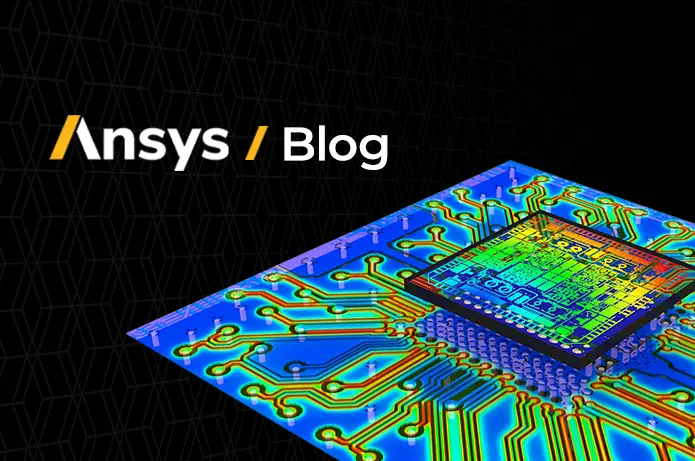-
-
July 3, 2018 at 12:14 pm
Adisa
SubscriberHi everybody,
Whether have the difference between contact and target bodies. If I do two analysis, one time the surface is used as contact and another is used as target bodies, do the results equal? Whether that has impact on the convergation.
Best regards.
-
July 3, 2018 at 12:40 pm
peteroznewman
SubscriberHi Adisa,
There are preferred configurations that may reduce the number of equations in the model at solve time. For example if you have a plate with four holes and four bolt heads that will make contact with the same plate face, then it is better for the top plate face to be the target and each bolt head to be a contact surface.
One general rule of thumb is to make the harder material the target and the softer material the contact. Another general rule of thumb is to make the flatter face the target and the smaller radius of curvature face the contact.
I'm sure you will get more comments and advice from other members.
Best regards,
Peter
-
July 3, 2018 at 12:41 pm
Sandeep Medikonda
Ansys EmployeeHi Adisa
To add to what Peter said, Contact elements are constrained against penetrating the target surface. However, target elements can penetrate through the contact surface. For rigid-to-flexible contact, the designation is obvious: the target surface is always the rigid surface and the contact surface is always the deformable surface. For flexible-to-flexible contact, the choice of which surface is designated contact or target can cause a different amount of penetration and thus affect the solution accuracy. Consider the following guidelines when designating the surfaces:
1. If a convex surface is expected to come into contact with a flat or concave surface, the flat/concave surface should be the target surface.
2. If one surface has a fine surface mesh and, in comparison, the other has a coarse mesh, the fine mesh should be the contact surface and the coarse mesh should be the target surface.
3. If one surface is stiffer than the other, the softer surface should be the contact surface and the stiffer surface should be the target surface.
4. If higher-order elements underly one of the external surfaces and lower-order elements underly the other surface, the surface with the underlying higher-order elements should be the contact surface and the other surface should be the target. However, for 3-D node-to-surface contact, the lower-order elements should be the contact surface. The higher-order elements should be the target surface.
5. If one surface is markedly larger than the other surface, such as in the instance where one surface surrounds the other surface, the larger surface should be the target surface.
6. In the case of 3-D internal beam-to-beam contact modeled by CONTA176 (a beam or pipe sliding inside another hollow beam or pipe), the inner beam should be considered the contact surface and the outer beam should be the target surface. However, when the inner beam is much stiffer than the outer beam, the inner beam can be the target surface.
These guidelines are true for asymmetric contact. Asymmetric contact is defined as having all contact elements on one surface and all target elements on the other surface. This is sometimes called "one-pass contact." This is usually the most efficient way to model surface-to-surface contact. However, under some circumstances, asymmetric contact does not perform satisfactorily. In such cases, you can designate each surface to be both a target and a contact surface. You can then generate two sets of contact pairs between the contacting surfaces (or just one contact pair; for example, a self-contact case). This is known as a symmetric contact (or "two-pass contact"). Obviously, symmetric contact is less efficient than asymmetric contact. However, many analyses will require its use (typically to reduce penetration).
Regards,
Sandeep
-
July 5, 2018 at 9:43 am
akhemka
Forum ModeratorAdisa, if you have issues with convergence then please see if the contact gets detected. Check different contact formulations and the detection method.
For example: with a large sliding problem and need of zero penetration you may go with Normal Lagrange formulation.
-
July 5, 2018 at 11:29 am
Adisa
SubscriberPeople, thank all!!!
Best regards!!!
-
- You must be logged in to reply to this topic.


Boost Ansys Fluent Simulations with AWS
Computational Fluid Dynamics (CFD) helps engineers design products in which the flow of fluid components is a significant challenge. These different use cases often require large complex models to solve on a traditional workstation. Click here to join this event to learn how to leverage Ansys Fluids on the cloud, thanks to Ansys Gateway powered by AWS.

Earth Rescue – An Ansys Online Series
The climate crisis is here. But so is the human ingenuity to fight it. Earth Rescue reveals what visionary companies are doing today to engineer radical new ideas in the fight against climate change. Click here to watch the first episode.

Ansys Blog
Subscribe to the Ansys Blog to get great new content about the power of simulation delivered right to your email on a weekly basis. With content from Ansys experts, partners and customers you will learn about product development advances, thought leadership and trends and tips to better use Ansys tools. Sign up here.

- Solver Pivot Warning in Beam Element Model
- Saving & sharing of Working project files in .wbpz format
- Understanding Force Convergence Solution Output
- User manual
- An Unknown error occurred during solution. Check the Solver Output…..
- What is the difference between bonded contact region and fixed joint
- The solver engine was unable to converge on a solution for the nonlinear problem as constrained.
- whether have the difference between using contact and target bodies
- Colors and Mesh Display
- Defining rigid body and contact

-
7272
-
4248
-
2899
-
1374
-
1322

© 2025 Copyright ANSYS, Inc. All rights reserved.





